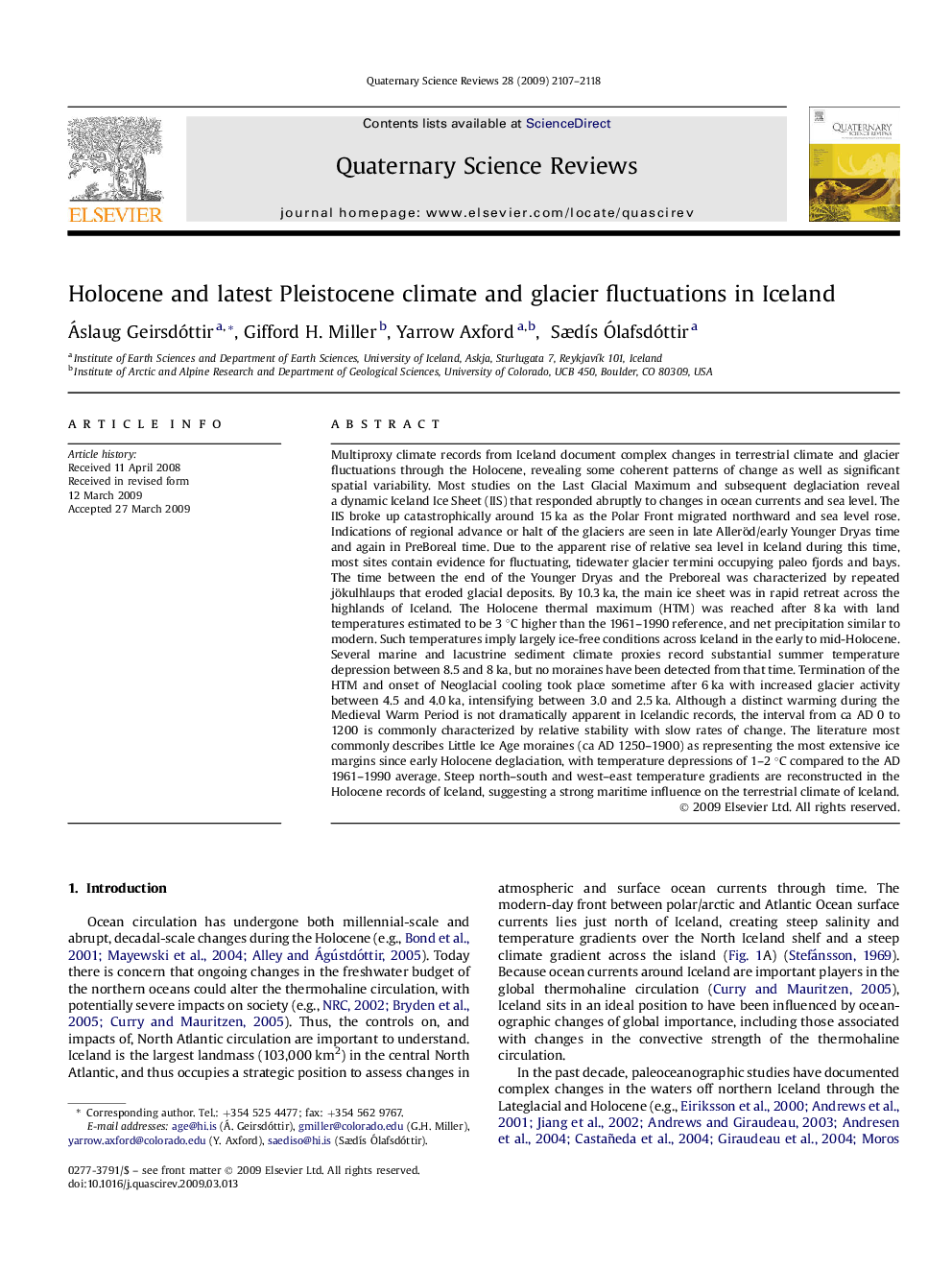| کد مقاله | کد نشریه | سال انتشار | مقاله انگلیسی | نسخه تمام متن |
|---|---|---|---|---|
| 4737949 | 1640935 | 2009 | 12 صفحه PDF | دانلود رایگان |

Multiproxy climate records from Iceland document complex changes in terrestrial climate and glacier fluctuations through the Holocene, revealing some coherent patterns of change as well as significant spatial variability. Most studies on the Last Glacial Maximum and subsequent deglaciation reveal a dynamic Iceland Ice Sheet (IIS) that responded abruptly to changes in ocean currents and sea level. The IIS broke up catastrophically around 15 ka as the Polar Front migrated northward and sea level rose. Indications of regional advance or halt of the glaciers are seen in late Alleröd/early Younger Dryas time and again in PreBoreal time. Due to the apparent rise of relative sea level in Iceland during this time, most sites contain evidence for fluctuating, tidewater glacier termini occupying paleo fjords and bays. The time between the end of the Younger Dryas and the Preboreal was characterized by repeated jökulhlaups that eroded glacial deposits. By 10.3 ka, the main ice sheet was in rapid retreat across the highlands of Iceland. The Holocene thermal maximum (HTM) was reached after 8 ka with land temperatures estimated to be 3 °C higher than the 1961–1990 reference, and net precipitation similar to modern. Such temperatures imply largely ice-free conditions across Iceland in the early to mid-Holocene. Several marine and lacustrine sediment climate proxies record substantial summer temperature depression between 8.5 and 8 ka, but no moraines have been detected from that time. Termination of the HTM and onset of Neoglacial cooling took place sometime after 6 ka with increased glacier activity between 4.5 and 4.0 ka, intensifying between 3.0 and 2.5 ka. Although a distinct warming during the Medieval Warm Period is not dramatically apparent in Icelandic records, the interval from ca AD 0 to 1200 is commonly characterized by relative stability with slow rates of change. The literature most commonly describes Little Ice Age moraines (ca AD 1250–1900) as representing the most extensive ice margins since early Holocene deglaciation, with temperature depressions of 1–2 °C compared to the AD 1961–1990 average. Steep north–south and west–east temperature gradients are reconstructed in the Holocene records of Iceland, suggesting a strong maritime influence on the terrestrial climate of Iceland.
Journal: Quaternary Science Reviews - Volume 28, Issues 21–22, October 2009, Pages 2107–2118